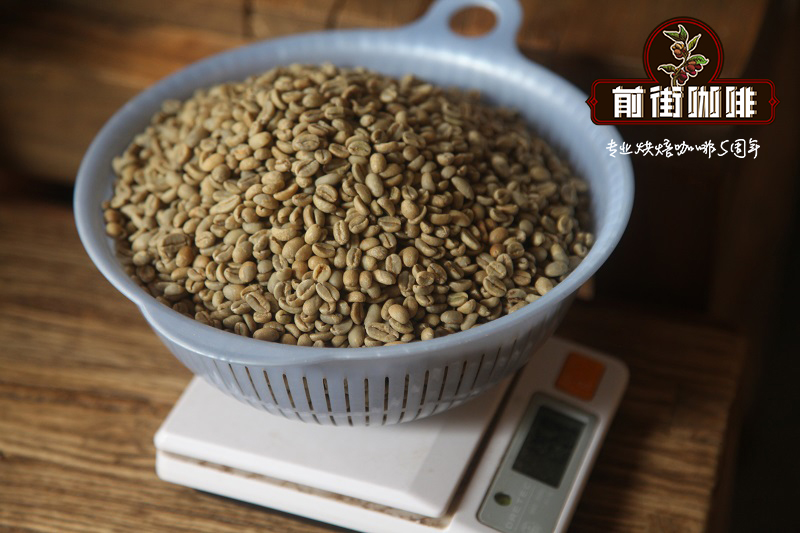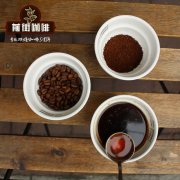Do blue mountain coffee beans and blue mountain coffee have the same meaning? What is Jamaica Blue Mountain Coffee?

Professional coffee knowledge exchange more coffee bean information please follow the coffee workshop (Wechat official account cafe_style)
Do blue mountain coffee beans and blue mountain coffee have the same meaning? What is Jamaican Blue Mountain Coffee?
Blue Mountain Coffee comes from the Blue Mountains region of Jamaica in the West Indies (geographically blind note: the West Indies are not in India but in the Caribbean). But not all the coffee produced in the Blue Mountain area is Blue Mountain coffee. The origin of Blue Mountain Coffee is restricted by both height and breadth. The so-called Blue Mountain Coffee is a kind of individual coffee beans, which was carried forward by the Japanese. Its producing area is located in the Blue Mountains of Jamaica. due to its high altitude and superior temperature and humidity, the coffee beans in this area have soft and changeable acidity, less bitterness and excellent sense of balance, so they are regarded by the Japanese as the best coffee beans in the world. Because of its high reputation and many false pretences, the Jamaican government has strictly divided the Blue Mountain area. only coffee beans produced by estates in the Blue Mountains designated by the government can be sold in barrels in the name of "Blue Mountain Coffee" (which is also its unique way), while other high-quality coffee beans produced in nearby areas can only be sold in the name of "Alpine Coffee". Because this regulation makes the production of real blue mountain coffee beans extremely limited, the price of real blue mountain coffee raw beans is the highest of all coffee beans, and the price of the top blue mountain one can be more than twice that of Hawaii Kona mentioned above. it is more than four to five times that of the average manor-grade item. On the other hand, blue mountain coffee requires about 20% more beans than ordinary coffee beans to develop its full flavor, making it more expensive. Most of the so-called Blue Mountain Coffee on the market are not real Blue Mountain Coffee beans, but try to recreate the taste of Blue Mountain Coffee in the way of blend beans.
Altitude: the Blue Mountain above 1700 meters above sea level is a rainforest reserve and coffee farming is not allowed. Blue Mountain Coffee must be grown at an altitude of 910m-1700 m. Coffee crops from 460m to 910m above sea level are called "Jamaican Alpine Coffee" (Jamaica High Mountain). Below 460m above sea level, it is called "Jamaica low Mountain Coffee" (Jamaica Low Mountain).
Refined washing treatment of Blue Mountain Coffee: coffee beans are not beans, but seeds in the cherry-like fruit (Coffee Berry) of coffee trees. Processing refers to the process of removing seeds from the peel and pulp of coffee fruit. This process varies from place to place, including washing, sun exposure, wet planing, intestinal digestion (Kopi Luwak), and so on.
1 washing: put the coffee cherry in the water. Unripe, moth-eaten, moldy fruit floats.
2 Pulping: put the selected coffee cherries into the machine and crush them to remove the flesh. The coffee beans are still coated with pectin (Parchment).
3 dry: dry the coffee beans with pectin naturally for 5 days, and use the machine to dehydrate if it is overcast and rainy. Too high moisture will cause the coffee beans to ferment and lose their flavor, while complete dehydration will make the coffee beans lose their flavor. The drying process is to control water content, this project is very important.
4 shelling: after the dried coffee beans are kept for 10 weeks, they are shelled by the machine and the silver film affixed to the nuts is worn off (like the red skin of peanuts). After shelling, the nuts are divided into four grades according to their size, figure and color: Grade I minute II,Grade III and Peaberry beans.
5 roasting: coffee manufacturers bake coffee beans. Simply put, baking is like baking toast. Baking will make the coffee beans aroma and color darker, at the same time will produce bitter taste. If you want to drink coffee with local flavor, you must choose shallow roasting, and the lightly roasted Blue Mountain Coffee is one of the best. Coffee beans roasted from shallow to deep. The back of the deep baking is not much of a native flavor. Coffee chains that use cheap coffee beans almost always bake deeply to cover up the flavor defects of the raw materials, so be careful if the coffee you drink is bitter. The Japanese are the people who love Blue Mountain Coffee most. 70% of the Blue Mountains in Jamaica go to Japan. Japan, which loves Blue Mountains and is good at handicrafts, is naturally too familiar with baking techniques. Because of the high price of Blue Mountain coffee, most of the so-called Blue Mountain coffee in the world is processed by imitating the taste of Blue Mountain with other coffee.
Blue Mountain blend, which is made from a variety of coffee beans from different countries, imitates the flavor of Jamaican Blue Mountain Coffee. It has a pleasant aroma, a little sour taste and a rich sense of hierarchy.
How to make blue mountain coffee beans by hand?
[Tiger Manning KONO hand flush]
Filter cup: KONO filter cup
Water temperature: 88 degrees
Degree of grinding: small Fuji degree of grinding 4
Cooking method: the ratio of water to flour is 1:14, 17g powder, 25g water for the first time, steaming for 30s, and 238g water for the second time. The extraction time is about 2:30 seconds.
Analysis: there are not many ribs at the bottom of the Kono cup, and the filter paper clings to the filter cup to achieve the purpose of limiting air flow, which can make water and coffee powder have longer contact soaking time in the filter cup and ensure the extraction time and extraction rate of rough grinding. In this way, the coffee powder can be fully extracted, enhance the mellow taste and make the taste more concentrated.
Important Notice :
前街咖啡 FrontStreet Coffee has moved to new addredd:
FrontStreet Coffee Address: 315,Donghua East Road,GuangZhou
Tel:020 38364473
- Prev

Colombia | what is the variety of emerald coffee? The grades of special coffee and top-grade coffee are
Professional coffee knowledge exchange more coffee bean information please follow the coffee workshop (Wechat official account cafe_style) Colombia | what is the variety of emerald coffee? How is the grade of special coffee and top coffee divided? Colombian coffee-made in Colombia, roasted coffee beans release sweet aromas with sweet acidity and moderate bitterness
- Next

Is the Jamaican Blue Mountain flavor coffee beans real? Identification of taste characteristics of authentic Blue Mountain No.1 Coffee
Professional coffee knowledge exchange more coffee bean information please follow the coffee workshop (Wechat official account cafe_style) Blue Mountain flavor coffee beans are Blue Mountain Coffee? What is the flavor of Blue Mountain? Is there a producing area certification for blue mountain flavor coffee? Blue Mountain Flavor: it just means that this coffee tastes like Blue Mountain (not necessarily)
Related
- Detailed explanation of Jadeite planting Land in Panamanian Jadeite Manor introduction to the grading system of Jadeite competitive bidding, Red bid, Green bid and Rose Summer
- Story of Coffee planting in Brenka region of Costa Rica Stonehenge Manor anaerobic heavy honey treatment of flavor mouth
- What's on the barrel of Blue Mountain Coffee beans?
- Can American coffee also pull flowers? How to use hot American style to pull out a good-looking pattern?
- Can you make a cold extract with coffee beans? What is the right proportion for cold-extracted coffee formula?
- Indonesian PWN Gold Mandrine Coffee Origin Features Flavor How to Chong? Mandolin coffee is American.
- A brief introduction to the flavor characteristics of Brazilian yellow bourbon coffee beans
- What is the effect of different water quality on the flavor of cold-extracted coffee? What kind of water is best for brewing coffee?
- Why do you think of Rose Summer whenever you mention Panamanian coffee?
- Introduction to the characteristics of authentic blue mountain coffee bean producing areas? What is the CIB Coffee Authority in Jamaica?

